formerly eScholarship Editions


|
|
|
|
Your search for
'Science' in subject
found 66 book(s). | Modify Search | Displaying 41 - 60 of 66 book(s) | |
| 41. | 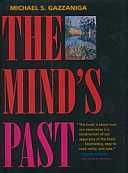 | Title: The mind's past Author: Gazzaniga, Michael S Published: University of California Press, 1998 Subjects: Science | Psychology | Cognitive Science | Neuroscience Publisher's Description: Why does the human brain insist on interpreting the world and constructing a narrative? In this ground-breaking work, Michael S. Gazzaniga, one of the world's foremost cognitive neuroscientists, shows how our mind and brain accomplish the amazing feat of constructing our past - a process clearly fraught with errors of perception, memory, and judgment. By showing that the specific systems built into our brain do their work automatically and largely outside of our conscious awareness, Gazzaniga calls into question our everyday notions of self and reality. The implications of his ideas reach deeply into the nature of perception and memory, the profundity of human instinct, and the ways we construct who we are and how we fit into the world around us.Over the past thirty years, the mind sciences have developed a picture not only of how our brains are built but also of what they were built to do. The emerging picture is wonderfully clear and pointed, underlining William James's notion that humans have far more instincts than other animals. Every baby is born with circuits that compute information enabling it to function in the physical world. Even what helps us to establish our understanding of social relations may have grown out of perceptual laws delivered to an infant's brain. Indeed, the ability to transmit culture - an act that is only part of the human repertoire - may stem from our many automatic and unique perceptual-motor processes that give rise to mental capacities such as belief and culture.Gazzaniga explains how the mind interprets data the brain has already processed, making "us" the last to know. He shows how what "we" see is frequently an illusion and not at all what our brain is perceiving. False memories become a part of our experience; autobiography is fiction. In exploring how the brain enables the mind, Gazzaniga points us toward one of the greatest mysteries of human evolution: how we become who we are. [brief] Similar Items |
| 42. | 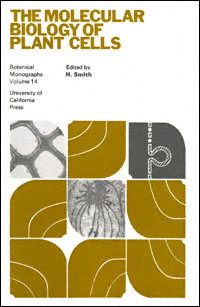 | Title: The molecular biology of plant cells Author: Smith, H. (Harry) 1935- Published: University of California Press, 1978 Subjects: Science | Botany | Biology Similar Items |
| 43. |  | Title: Natural conflict resolution Author: Aureli, Filippo 1962- Published: University of California Press, 2000 Subjects: Science | Zoology | Psychology | Cultural Anthropology | Politics | Sociology Publisher's Description: Aggression and competition are customarily presented as the natural state of affairs in both human society and the animal kingdom. Yet, as this book shows, our species relies heavily on cooperation for survival as do many others - from wolves and dolphins to monkeys and apes. A distinguished group of fifty-two authors, including many of the world's leading experts on human and animal behavior, review evidence from multiple disciplines on natural conflict resolution, making the case that reconciliation and compromise are as much a part of our heritage as is waging war. Chimpanzees kiss and embrace after a fight. Children will appeal to fairness when fighting over a toy. Spotted hyenas, usually thought to be a particularly aggressive species, use reconciliation to restore damaged relationships. As these studies show, there are sound evolutionary reasons for these peacekeeping tendencies. This book also addresses the cultural, ecological, cognitive, emotional, and moral perspectives of conflict resolution. [brief] Similar Items |
| 44. | 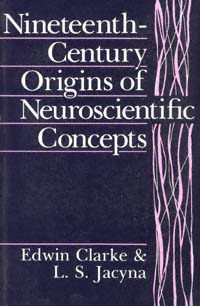 | Title: Nineteenth-century origins of neuroscientific concepts Author: Clarke, Edwin Published: University of California Press, 1992 Subjects: Science | History and Philosophy of Science | Medicine | Ethics Publisher's Description: This book traces the seminal ideas that emerged in the first half of the nineteenth century, when the fundamental concepts of modern neurophysiology and anatomy were formulated in a period of unprecedented scientific discovery. Similar Items |
| 45. |  | Title: The nuclear seduction: why the arms race doesn't matter and what does Author: Schwartz, William A Published: University of California Press, 1989 Subjects: Politics | Sociology | Social Problems | Public Policy | Science Similar Items |
| 46. | 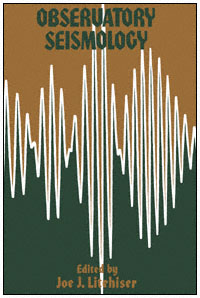 | Title: Observatory seismology: an anniversary symposium on the occasion of the centennial of the University of California at Berkeley seismographic stations Author: Litehiser, J. J. (Joe J.) Published: University of California Press, 1990 Subjects: Science | Geology Publisher's Description: The first effective seismographs were built between 1879 and 1890. In 1885, E. S. Holden, an astronomer and then president of the University of California, instigated the purchase of the best available instruments of the time "to keep a register of all earthquake shocks in order to be able to control the positions of astronomical instruments." These seismographs were installed two years later at Lick Observatory on Mt. Hamilton and at the Berkeley campus of the University. Over the years those stations have been upgraded and joined by other seismographic stations administered at Berkeley, to become the oldest continuously operating stations in the Western Hemisphere. The first hundred years of the Seismographic Stations of the University of California at Berkeley, years in which seismology has often assumed an unforeseen role in issues of societal and political importance, ended in 1987.To celebrate the centennial a distinguished group of fellows, staff, and friends of the Stations met on the Berkeley campus in May 1987. The papers they presented are gathered in this book, a distillation of the current state of the art in observatory seismology. Ranging through subjects of past, present, and future seismological interest, they provide a benchmark reference for years to come. [brief] Similar Items |
| 47. |  | Title: Permissible dose: a history of radiation protection in the twentieth century Author: Walker, J. Samuel Published: University of California Press, 2000 Subjects: Science | Environmental Studies | American Studies | United States History | Technology and Society Publisher's Description: How much radiation is too much? J. Samuel Walker examines the evolution, over more than a hundred years, of radiation protection standards and efforts to ensure radiation safety for nuclear workers and for the general public. The risks of radiation - caused by fallout from nuclear bomb testing, exposure from medical or manufacturing procedures, effluents from nuclear power, or radioactivity from other sources - have aroused more sustained controversy and public fear than any other comparable industrial or environmental hazard. Walker clarifies the entire radiation debate, showing that permissible dose levels are a key to the principles and practices that have prevailed in the field of radiation protection since the 1930s, and to their highly charged political and scientific history as well. [brief] Similar Items |
| 48. |  | Title: Phase diagrams of the elements Author: Young, D. A. (David A.) 1942- Published: University of California Press, 1991 Subjects: Science | Physics Publisher's Description: The behavior of solid and liquid matter at high pressures and temperatures is best described in a phase diagram, which shows the regions of stability of different phases of the material. Thanks to the diamond-anvil cell, which has made possible much higher pressures, and to new and very accurate theoretical models and methods, Phase Diagrams of the Elements presents the most up-to-date information on the phase behavior of all the chemical elements from hydrogen to fermium.The book summarizes, with the aid of tables and illustrations, the experimental data and the theoretical calculations. Each element is discussed in a separate section. Other chapters deal with methods, the liquid-vapor transition, and an overview of the elements. While comprehensively reviewing all that has been done in this important area, the author also points to questions that need much more experimental and theoretical work. [brief] Similar Items |
| 49. | 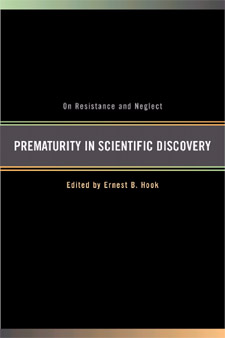 | Title: Prematurity in scientific discovery: on resistance and neglect Author: Hook, Ernest B 1936- Published: University of California Press, 2002 Subjects: Science | History of Science | Social and Political Thought | Geology | Evolution | Physics | History of Medicine Publisher's Description: For centuries, observers have noted the many obstacles to intellectual change in science. In a much-discussed paper published in Scientific American in 1972, molecular biologist Gunther Stent proposed an explicit criterion for one kind of obstacle to scientific discovery. He denoted a claim or hypothesis as "premature" if its implications cannot be connected to canonical knowledge by a simple series of logical steps. Further, Stent suggested that it was appropriate for the scientific community to ignore such hypotheses so that it would not be overwhelmed by vast numbers of false leads. In this volume, eminent scientists, physicians, historians, social scientists, and philosophers respond to Stent's thesis. [brief] Similar Items |
| 50. |  | Title: Prescription for profit: how doctors defraud Medicaid Author: Jesilow, Paul 1950- Published: University of California Press, 1993 Subjects: Science | Sociology | Medicine | Social Problems | Economics and Business Publisher's Description: In this explosive exposé of our health care system, Paul Jesilow, Henry N. Pontell, and Gilbert Geis uncover the dark side of physician practice. Using interviews with doctors and federal, state, and private officials and extensive investigation of case files, they tell the stories of doctors who profit from abortions on women who aren't pregnant, of needless surgery, overcharging for services, and excessive testing.How can doctors, recipients of a sacred trust and sworn to the Hippocratic Oath, violate Medicaid so egregiously? The authors trace patterns of abuse to the program's inauguration in the mid 1960s, when government authorities, not individual patients, were entrusted with responsibility for payments. Determining fees and regulating treatment also became the job of government agencies, thus limiting the doctors' traditional role. Physicians continue to disagree with Medicare and Medicaid policies that infringe on their autonomy and judgment.The medical profession has not accepted the gravity or extent of some members' illegal behavior, and individual doctors continue to blame violations on subordinates and patients. In the meantime, program guidelines have grown more confusing, hamstringing efforts to detect, apprehend, and prosecute Medicaid defrauders. Failure to institute a coherent policy for fraud control in the medical benefit program has allowed self-serving and greedy practitioners to violate the law with impunity. Prescription for Profit is a shocking revelation of abuse within a once-hallowed profession. It is a book that every doctor, and every patient, needs to read this year. [brief] Similar Items |
| 51. |  | Title: The Quantifying spirit in the 18th century Author: Frängsmyr, Tore 1938- Published: University of California Press, 1990 Subjects: Science | History and Philosophy of Science | Intellectual History Similar Items |
| 52. |  | Title: The quiet revolution: Hermann Kolbe and the science of organic chemistry Author: Rocke, Alan J 1948- Published: University of California Press, 1993 Subjects: Science | History and Philosophy of Science | Physical Sciences | European History Publisher's Description: Organic chemist Hermann Kolbe (1818-1884) is the subject of this vigorously contextualized biography, which combines the approaches of cognitive and social history of science. Kolbe was one of the most outstanding chemists during the remarkable period in which German science, like the wider manifestations of German industrial and political power, rose to a position of world dominance.Rocke portrays Kolbe as a leading actor in the transformation of the institutional and pedagological dimensions of the physical sciences, as well as in the rapid growth of technologically powerful pure sciences. In all these areas there was a sharp inflection point around 1860 when, as Rocke persuasively argues, the primary discipline in the drama was organic chemistry. [brief] Similar Items |
| 53. |  | Title: Race hygiene and national efficiency: the eugenics of Wilhelm Schallmayer Author: Weiss, Sheila Faith Published: University of California Press, 1987 Subjects: Science | History and Philosophy of Science Similar Items |
| 54. | 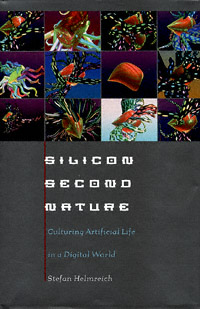 | Title: Silicon second nature: culturing artificial life in a digital world Author: Helmreich, Stefan 1966- Published: University of California Press, 1998 Subjects: Science | Computer Science | Biology | Technology and Society | Social Theory | Cultural Anthropology | California and the West Publisher's Description: Silicon Second Nature takes us on an expedition into an extraordinary world where nature is made of bits and bytes and life is born from sequences of zeroes and ones. Artificial Life is the brainchild of scientists who view self-replicating computer programs - such as computer viruses - as new forms of life. Anthropologist Stefan Helmreich's look at the social and simulated worlds of Artificial Life - primarily at the Santa Fe Institute, a well-known center for studies in the sciences of complexity - introduces readers to the people and programs connected with this unusual hybrid of computer science and biology.When biology becomes an information science, when DNA is downloaded into virtual reality, new ways of imagining "life" become possible. Through detailed dissections of the artifacts of Artifical Life, Helmreich explores how these novel visions of life are recombining with the most traditional tales told by Western culture. Because Artificial Life scientists tend to see themselves as masculine gods of their cyberspace creations, as digital Darwins exploring frontiers filled with primitive creatures, their programs reflect prevalent representations of gender, kinship, and race, and repeat origin stories most familiar from mythical and religious narratives.But Artificial Life does not, Helmreich says, simply reproduce old stories in new software. Much like contemporary activities of cloning, cryonics, and transgenics, the practice of simulating and synthesizing life in silico challenges and multiplies the very definition of vitality. Are these models, as some would claim, actually another form of the real thing? Silicon Second Nature takes Artifical Life as a symptom and source of our mutating visions of life itself. [brief] Similar Items |
| 55. | 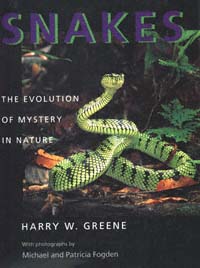 | Title: Snakes: the evolution of mystery in nature Author: Greene, Harry W 1945- Published: University of California Press, 1997 Subjects: Science | Biology | Natural History Publisher's Description: This is a book about some of nature's most alluring and forbidding creatures, written by a man with an abiding passion for snakes, as well as for science, the fate of the planet, and the wonder of life. Harry Greene presents every facet of the natural history of snakes - their diversity, evolution, and conservation - and at the same time makes a personal statement of why these animals are so compelling.This book provides an up-to-date summary of the biology of snakes on a global basis. Eight chapters are devoted to general biology topics, including anatomy, feeding, venoms, predation and defense, social behavior, reproduction, evolution, and conservation; eight chapters survey the major snake groups, including blindsnakes, boas, colubrids, stiletto snakes, cobras, sea snakes, and vipers. Details of particular interest, such as coral snake mimicry and the evolution of the0 rattle, are highlighted as special topics. Chapter introductory essays are filled with anecdotes that will tempt nonspecialists to read on, while the book's wealth of comprehensive information will gratify herpeto-culturalists and professional biologists.Greene's writing is clear, engaging, and full of appreciation for his subject. Michael and Patricia Fogden are known internationally for their outstanding work, and their stunning color photographs of snakes in their natural habitats are a brilliant complement to Greene's text. Here is a scientific book that provides accurate information in an accessible way to general readers, strongly advocates for a persecuted group of animals, encourages conservation - not just of snakes but of ecosystems - and credits science for enriching our lives. In helping readers explore the role of snakes in human experience, Greene and the Fogdens show how science and art can be mutual pathways to understanding. [brief] Similar Items |
| 56. | 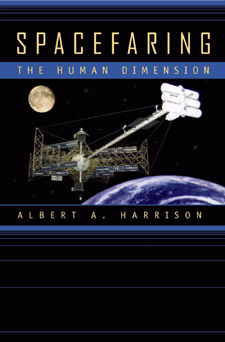 | Title: Spacefaring: the human dimension Author: Harrison, Albert A Published: University of California Press, 2001 Subjects: Science | Technology and Society | Psychology Publisher's Description: The stars have always called us, but only for the past forty years or so have we been able to respond by traveling in space. This book explores the human side of spaceflight: why people are willing to brave danger and hardship to go into space; how human culture has shaped past and present missions; and the effects of space travel on health and well-being. A comprehensive and authoritative treatment of its subject, this book combines statistical studies, rich case histories, and gripping anecdotal detail as it investigates the phenomenon of humans in space - from the earliest spaceflights to the missions of tomorrow. Drawing from a strong research base in the behavioral sciences, Harrison covers such topics as habitability, crew selection and training, coping with stress, group dynamics, accidents, and more. In addition to taking a close look at spacefarers themselves, Spacefaring reviews the broad organizational and political contexts that shape human progress toward the heavens. With the ongoing construction of the International Space Station, the human journey to the stars continues, and this book will surely help guide the way. [brief] Similar Items |
| 57. | 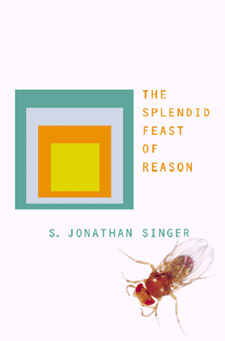 | Title: The splendid feast of reason Author: Singer, Seymour Jonathan 1924- Published: University of California Press, 2001 Subjects: Science | History of Science | Philosophy Publisher's Description: Jonathan Singer's witty, erudite book is a celebration of rationality and an urgent call to make use of intelligence and reason to better cope with human problems. Emphasizing the importance of rationality's greatest achievement, modern science, Singer - one of the foremost biologists of our era - argues that for the first time in several million years humanity has at its disposal the tools for an objective understanding of the external world. Singer demonstrates that, today more than ever, the fullest exercise of rationality is essential if humanity is to rein in a runaway technology and control an explosion of the human population that together threaten to devastate life on this planet within only a few more generations. The intrusion of reason and rationality into our largely irrational world has been painfully slow, uneven, and often unwelcome. Singer explains that for rationalists the founding of modern science - which took place only a few hundred years ago - has overthrown many of the myths of conventional wisdom and dogmas of traditional religions. Yet these beliefs still hold sway over the irrational world, obstructing efforts to deal sensibly with the problematic future of mankind. The core of The Splendid Feast of Reason is an engaging and accessible account of the knowledge that modern science provides. Singer offers an absorbing discussion of how life works, of the nature of reproduction, aging, and death, and of the necessary fragility of the individual life compared to the resilience of life itself. He emphasizes the primary role of the genes in determining the structural organization and the behaviors of living things, including humans. He also stresses the nature and mechanisms of biological evolution, mechanisms that have now been placed in jeopardy because of human ignorance and irrational appetites. Finally, Singer delves into the enigma of the real world with its irrational and chaotic operations and offers suggestions of how a rationalist can not only survive, but thrive in it. [brief] Similar Items |
| 58. | 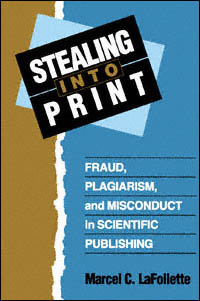 | Title: Stealing into print: fraud, plagiarism, and misconduct in scientific publishing Author: LaFollette, Marcel C. (Marcel Chotkowski) Published: University of California Press, 1992 Subjects: Media Studies | History and Philosophy of Science | Print Media | Public Policy | Science Publisher's Description: False data published by a psychologist influence policies for treating the mentally retarded. A Nobel Prize-winning molecular biologist resigns the presidency of Rockefeller University in the wake of a scandal involving a co-author accused of fabricating data. A university investigating committee declares that almost half the published articles of a promising young radiologist are fraudulent.Incidents like these strike at the heart of the scientific enterprise and shake the confidence of a society accustomed to thinking of scientists as selfless seekers of truth. Marcel LaFollette's long-awaited book gives a penetrating examination of the world of scientific publishing in which such incidents of misconduct take place. Because influential scientific journals have been involved in the controversies, LaFollette focuses on the fragile "peer review" process - the editorial system of seeking pre-publication opinions from experts. She addresses the cultural glorification of science, which, combined with a scientist's thirst for achievement, can seem to make cheating worth the danger. She describes the great risks taken by the accusers - often scholars of less prestige and power than the accused - whom she calls "nemesis figures" for their relentless dedication to uncovering dishonesty.In sober warning, LaFollette notes that impatient calls from Congress, journalists, and taxpayers for greater accountability from scientists have important implications for the entire system of scientific research and communication.Provocative and learned, Stealing Into Print is certain to become the authoritative work on scientific fraud, invaluable to the scientific community, policy makers, and the general public. [brief] Similar Items |
| 59. | 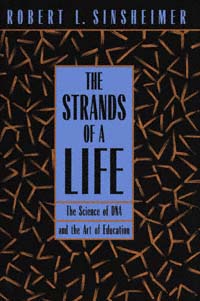 | Title: The strands of a life Author: Sinsheimer, Robert Published: University of California Press, 1994 Subjects: Science | Biology | History and Philosophy of Science | Autobiographies and Biographies Publisher's Description: From heading a campus of the largest public university in the nation to participating in the birth of molecular biology, Robert L. Sinsheimer's experiences have given him a unique vantage point from which to view the paths that science and education have taken in the twentieth century. This book tells the story of his life, of his own growth, and of his leading role in both science and higher learning during the past fifty years.Robert L. Sinsheimer's experiences have given him a unique vantage point from which to view the paths that science and education have taken in the twentieth century. He has witnessed and participated in the birth of molecular biology, taught at leading universities, and headed a campus of the largest public university in the nation. This book tells the story of his life, of his own growth, and of his leading role in both science and higher learning during the past fifty years.While a student and then a researcher at MIT, and as a professor at Iowa State University and later at Caltech, Sinsheimer was a major participant in the "molecular revolution" that radically transformed the science of life. He was also one of the first to foresee the potential of molecular biology and to draw attention to some of the ethical quandaries the new science would pose.In 1977 Sinsheimer became chancellor at the University of California, Santa Cruz, at a crucial time in the campus's evolution. He played a key part in revitalizing the educational experiment that has made the campus unique among the state's institutions of higher learning.Sinsheimer's life has been lived at the ever-advancing edge of knowledge. In simple, elegant language, he offers historical and philosophical insights into the world of science and the mind of a scientist. His reflections are both fascinating and valuable. [brief] Similar Items |
| 60. | 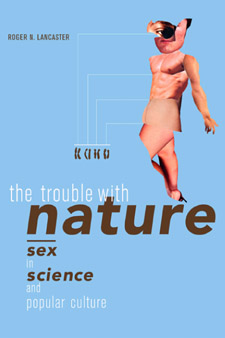 | Title: The trouble with nature: sex in science and popular culture Author: Lancaster, Roger N Published: University of California Press, 2003 Subjects: American Studies | Anthropology | Gender Studies | Popular Culture | GayLesbian and Bisexual Studies | Science | Sociology Publisher's Description: Roger N. Lancaster provides the definitive rebuttal of evolutionary just-so stories about men, women, and the nature of desire in this spirited exposé of the heterosexual fables that pervade popular culture, from prime-time sitcoms to scientific theories about the so-called gay gene. Lancaster links the recent resurgence of biological explanations for gender norms, sexual desires, and human nature in general with the current pitched battles over sexual politics. Ideas about a "hardwired" and immutable human nature are circulating at a pivotal moment in human history, he argues, one in which dramatic changes in gender roles and an unprecedented normalization of lesbian and gay relationships are challenging received notions and commonly held convictions on every front. The Trouble with Nature takes on major media sources - the New York Times, Newsweek - and widely ballyhooed scientific studies and ideas to show how journalists, scientists, and others invoke the rhetoric of science to support political positions in the absence of any real evidence. Lancaster also provides a novel and dramatic analysis of the social, historical, and political backdrop for changing discourses on "nature," including an incisive critique of the failures of queer theory to understand the social conflicts of the moment. By showing how reductivist explanations for sexual orientation lean on essentialist ideas about gender, Lancaster invites us to think more deeply and creatively about human acts and social relations. [brief] Similar Items |